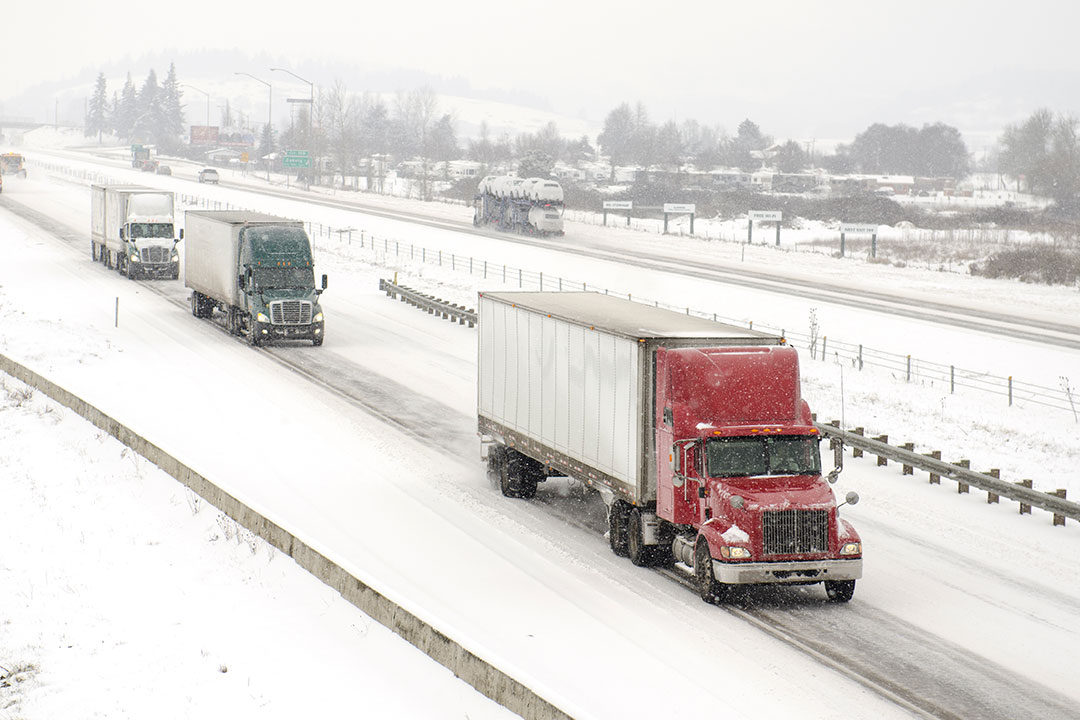Driving during snow and ice storms can be dangerous for any vehicle. However, truck driving in snow can often be deadly and can leave lasting damages – physically and mentally – to all parties involved.
Winter trucking accidents in Missouri remind us of the dangers we can encounter while during hazardous conditions. According to a study titled U.S. Highway Crashes in Adverse Weather Conditions, 24% of all crashes are due to weather-related conditions such as rain, sleet, snow and wind. As truck injury lawyers in St. Louis, we represent those who have been injured after accidents from driving a semi truck in snow, ice or other winter weather hazards. However, we often find that drivers don’t exercise enough caution when there is snow or ice on roads.
What to do when winter weather strikes while truck driving in snow?
Truck driving in snow requires attention and awareness in order to keep both the driver and others on the road safe. Section 392.14 of the Federal Motor Carrier Safety Regulations advises drivers to exercise extreme caution when snow, ice or sleet adversely affect their visibility or vehicle’s traction. This means trucks in snow must reduce speed or discontinue travel until snowy roads improve. However, truckers driving in snow can also be under increased pressure to deliver their goods even when inclement weather strikes.
The Missouri Commercial Driver’s License Manual suggests truck drivers should do the following winter weather conditions:
- Make sure defrosters and wipers work to help visibility;
- Make sure there is enough tread on tires;
- Use chains if necessary on snow and ice;
- Check for ice on roads, especially bridges and overpasses;
- Adjust turning and braking to conditions; and
- Adjust speed and space to conditions.
What are common crashes caused by truck driving in snow or ice?
When we handle a case for winter trucking in Missouri, we commonly see cases develop from these types of crash situations:
- Jackknifing – when a trailer of a large semi-truck or big rig pushes the front towing vehicle to one side – normally caused when wheels lock up when downshifting while driving a semi truck in snow;
- Head-on collisions – when the front of a semi strikes the front of another car or truck – usually occurs when a semi-truck loses control and crosses the centerline;
- Rear-end collisions – when the front of a semi-truck strikes the back of another car or truck; and
- Rollovers – when a semi-truck completely overturns to its side or roof.
All of these crashes from truck driving in snow or ice are highly dangerous and can result in multiple car pile ups, severe injury or fatalities. During past snowstorms, many highways in Missouri experienced dangerous semi-truck accidents, including a truck driver losing control and jackknifing off I-55 in southeast Missouri and a multiple car crash in St. Charles, MO from ice on the roads. These crashes are just a reminder to take precautions and assess driving conditions before truck driving in snow.
Working for You After a Winter Trucking Accident
At Muchnick Haber Margolis, we understand the weather can be unpredictable, but you can always place your trust in our dedicated team of attorneys to leave no stone unturned in your winter trucking crash case. If you were involved in a crash with truckers driving in snow during a recent storm, contact our winter trucking accident attorneys to start building your case.
For more information about truck driving in snow or other weather conditions, explore our extensive list of truck driving accident blogs or our news alerts.
